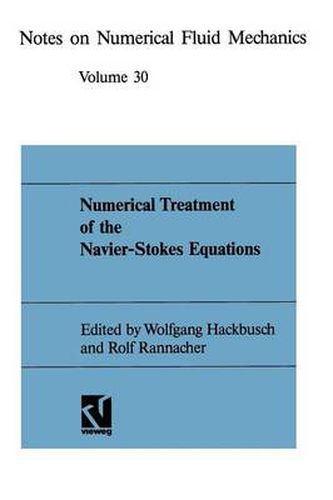Readings Newsletter
Become a Readings Member to make your shopping experience even easier.
Sign in or sign up for free!
You’re not far away from qualifying for FREE standard shipping within Australia
You’ve qualified for FREE standard shipping within Australia
The cart is loading…






This title is printed to order. This book may have been self-published. If so, we cannot guarantee the quality of the content. In the main most books will have gone through the editing process however some may not. We therefore suggest that you be aware of this before ordering this book. If in doubt check either the author or publisher’s details as we are unable to accept any returns unless they are faulty. Please contact us if you have any questions.
The most frequently used method for the numerical integration of parabolic differential equa- tions is the method of lines, where one first uses a discretization of space derivatives by finite differences or finite elements and then uses some time-stepping method for the the solution of resulting system of ordinary differential equations. Such methods are, at least conceptually, easy to perform. However, they can be expensive if steep gradients occur in the solution, stability must be controlled, and the global error control can be troublesome. This paper considers a simultaneaus discretization of space and time variables for a one-dimensional parabolic equation on a relatively long time interval, called ‘time-slab’. The discretization is repeated or adjusted for following ‘time-slabs’ using continuous finite element approximations. In such a method we utilize the efficiency of finite elements by choosing a finite element mesh in the time-space domain where the finite element mesh has been adjusted to steep gradients of the solution both with respect to the space and the time variables. In this way we solve all the difficulties with the classical approach since stability, discretization error estimates and global error control are automatically satisfied. Such a method has been discussed previously in [3] and [4]. The related boundary value techniques or global time integration for systems of ordinary differential equations have been discussed in several papers, see [12] and the references quoted therein.
$9.00 standard shipping within Australia
FREE standard shipping within Australia for orders over $100.00
Express & International shipping calculated at checkout
This title is printed to order. This book may have been self-published. If so, we cannot guarantee the quality of the content. In the main most books will have gone through the editing process however some may not. We therefore suggest that you be aware of this before ordering this book. If in doubt check either the author or publisher’s details as we are unable to accept any returns unless they are faulty. Please contact us if you have any questions.
The most frequently used method for the numerical integration of parabolic differential equa- tions is the method of lines, where one first uses a discretization of space derivatives by finite differences or finite elements and then uses some time-stepping method for the the solution of resulting system of ordinary differential equations. Such methods are, at least conceptually, easy to perform. However, they can be expensive if steep gradients occur in the solution, stability must be controlled, and the global error control can be troublesome. This paper considers a simultaneaus discretization of space and time variables for a one-dimensional parabolic equation on a relatively long time interval, called ‘time-slab’. The discretization is repeated or adjusted for following ‘time-slabs’ using continuous finite element approximations. In such a method we utilize the efficiency of finite elements by choosing a finite element mesh in the time-space domain where the finite element mesh has been adjusted to steep gradients of the solution both with respect to the space and the time variables. In this way we solve all the difficulties with the classical approach since stability, discretization error estimates and global error control are automatically satisfied. Such a method has been discussed previously in [3] and [4]. The related boundary value techniques or global time integration for systems of ordinary differential equations have been discussed in several papers, see [12] and the references quoted therein.